Tech Giants' Global Venturing Guoli Chen
Visit to download the full and correct content document: https://ebookmass.com/product/seeing-the-unseen-behind-chinese-tech-giants-global -venturing-guoli-chen/
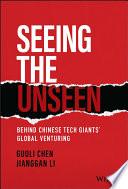
More products digital (pdf, epub, mobi) instant download maybe you interests ...
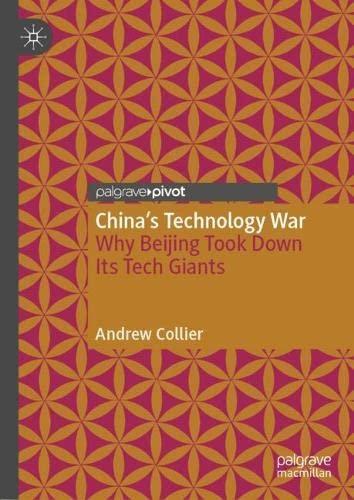
China’s Technology War: Why Beijing Took Down Its Tech Giants Andrew Collier
https://ebookmass.com/product/chinas-technology-war-why-beijingtook-down-its-tech-giants-andrew-collier/

Signals: The 27 Trends Defining the Future of the Global Economy 1st Edition Jeff Desjardins
https://ebookmass.com/product/signals-the-27-trends-defining-thefuture-of-the-global-economy-1st-edition-jeff-desjardins/

Sight Unseen: The Greek Gift Book One Juniper Rose
https://ebookmass.com/product/sight-unseen-the-greek-gift-bookone-juniper-rose/
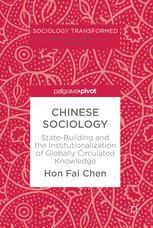
Chinese Sociology: State-Building and the Institutionalization of Globally Circulated Knowledge 1st Edition Hon Fai Chen (Auth.)
https://ebookmass.com/product/chinese-sociology-state-buildingand-the-institutionalization-of-globally-circulatedknowledge-1st-edition-hon-fai-chen-auth/

Challenges and Opportunities for Chinese Agriculture: Feeding Many While Protecting the Environment 1st ed. Edition Wensheng Chen
https://ebookmass.com/product/challenges-and-opportunities-forchinese-agriculture-feeding-many-while-protecting-theenvironment-1st-ed-edition-wensheng-chen/
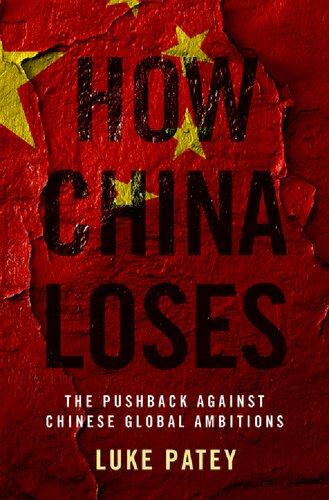
How China Loses: The Pushback against Chinese Global Ambitions Luke Patey
https://ebookmass.com/product/how-china-loses-the-pushbackagainst-chinese-global-ambitions-luke-patey/

The Global Circulation of Chinese Materia Medica, 1700–1949 Di Lu
https://ebookmass.com/product/the-global-circulation-of-chinesemateria-medica-1700-1949-di-lu/
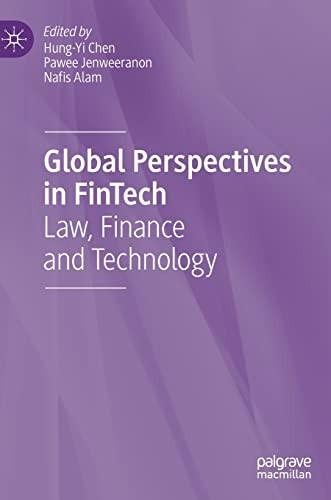
Global Perspectives in FinTech: Law, Finance and Technology Hung-Yi Chen
https://ebookmass.com/product/global-perspectives-in-fintech-lawfinance-and-technology-hung-yi-chen/
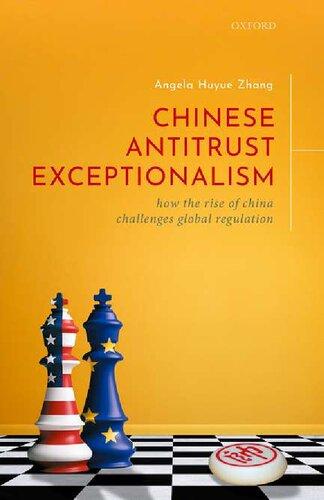
Chinese Antitrust Exceptionalism: How the Rise of China Challenges Global Regulation Angela Huyue Zhang
https://ebookmass.com/product/chinese-antitrust-exceptionalismhow-the-rise-of-china-challenges-global-regulation-angela-huyuezhang/
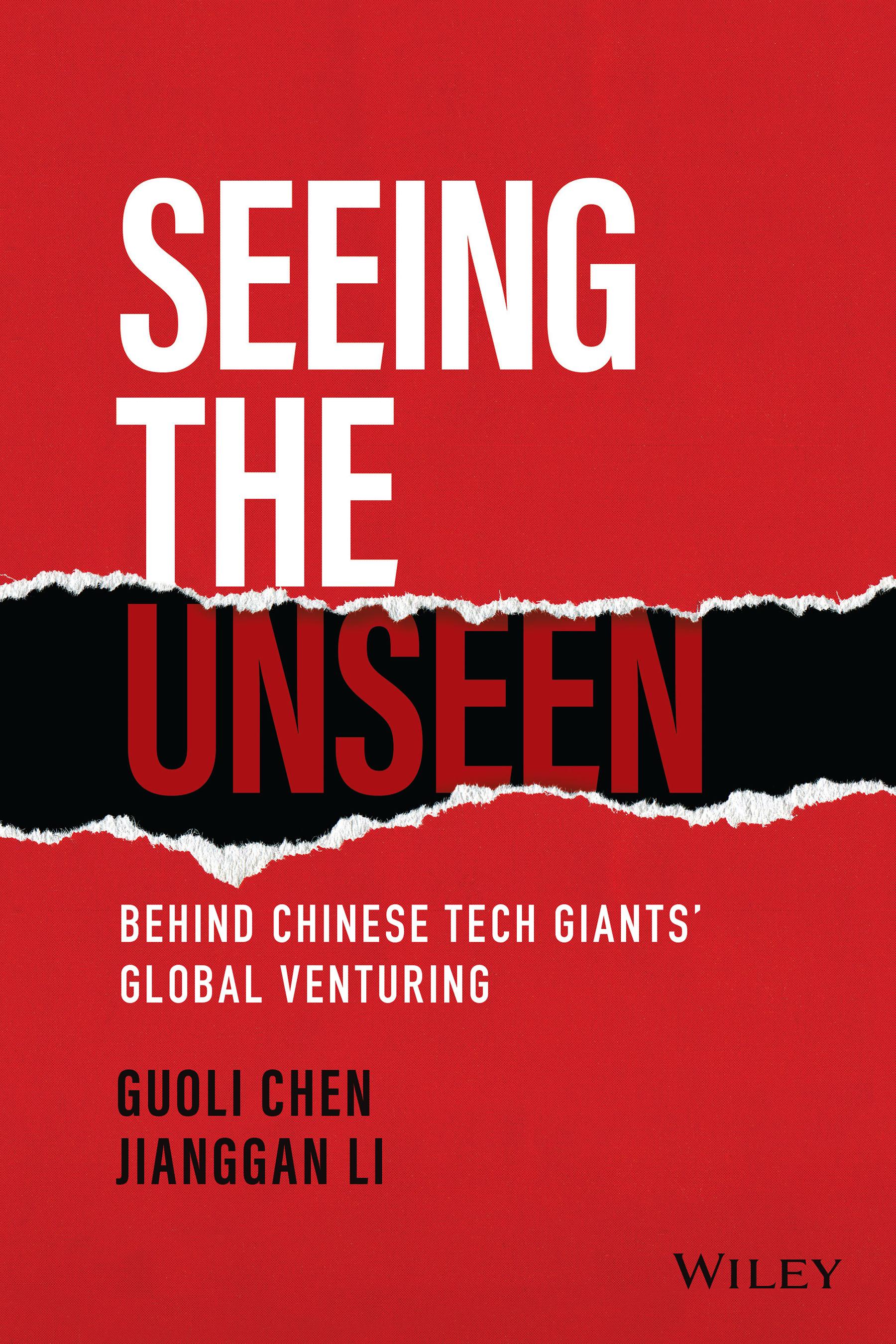
Additional Praise for Seeing the Unseen
“The authors do a masterful job of demystifying the key factors driving the rise of world-class technology and entrepreneurship from China. Through first-hand experience as entrepreneurs, strategy leaders, and investors from China doing business globally, they offer insights and practical approaches for entrepreneurs everywhere to better compete both in China and abroad.”
Blake Larson, global tech entrepreneur
“A standout in the multitude of works explaining what Chinese technology companies do and how, Seeing the Unseen expertly explains their ‘why’ and offers a practical framework for collaboration—or competition—with Chinese founders as they take on the world. Interwoven with well-placed forays into China’s rich history, a delight to read.”
Dmitry Levit, partner, Cento Ventures
“Seeing the Unseen discusses the past, present, and future of Chinese tech firms. It discusses why and how giants rose in the past, the challenges faced today in the global arena, and what we can expect in the future. The book provides deep insights to anyone who wants to know about Tech China and rising players from emerging markets.”
Feng Zhu, professor of business administration, Harvard Business School
“Seeing the Unseen deciphers much of the philosophy in action on how entrepreneurs think and how they make crucial decisions. There are many gold nuggets in understanding why key events in Chinese entrepreneur history happened the way they did.”
Jianfeng Lu, chairman, Wiz Holdings (wiz.ai), serial entrepreneur and investor
“My great-grandparents once told us to keep on learning all the way to China, as the rich history there offers a lot of lessons for our work and life. This book, which is very detailed and informative, shows just that. It is a strong combination of in-depth research and life experience of the authors in the tech industry. A must-read!”
Kameswara Natakusumah, country leader and president director, Willis Tower Watson Indonesia
“For those who are interested in or embedded in the ecosystem of Chinese tech firms, Seeing the Unseen is a delightful and thorough guide full of information and insights. Reading it is not only a must, but a wonderful journey led by Guoli and Jianggan. Both have a profound yet objective understanding of the history and leadership of Chinese tech giants and how they impact the world.”
Randolph Hsu, founder of Ondine Capital
“For anyone interested in Chinese tech companies, don’t walk, but run, to get this book. As deeply embedded experts in the Chinese tech context, the authors raise the curtain on China and its rising tech giants.”
Riitta Katila, W. M. Keck Sr. chaired professor of management science, and research director of the Stanford Technology Ventures Program, Stanford University
“Seeing the Unseen explains many of the enigmas that I experienced as an expat while working and living in Asia. If I could go back in time, I’d better understand why Chinese tech companies operate the way they do, and how to better work with them. Fully recommended reading!”
Rodrigo Becerra Mizuno, chief technology officer, Televisa Univisión
Seeing the Unseen
Behind Chinese Tech Giants’ Global Venturing
GUOLI CHEN
JIANGGAN LI
Copyright © 2022 by Guoli Chen and Momentum Works Pte Ltd. All rights reserved.
Published by John Wiley & Sons, Inc., Hoboken, New Jersey.
Published simultaneously in Canada.
No part of this publication may be reproduced, stored in a retrieval system, or transmitted in any form or by any means, electronic, mechanical, photocopying, recording, scanning, or otherwise, except as permitted under Section 107 or 108 of the 1976 United States Copyright Act, without either the prior written permission of the Publisher, or authorization through payment of the appropriate per-copy fee to the Copyright Clearance Center, Inc., 222 Rosewood Drive, Danvers, MA 01923, (978) 750-8400, fax (978) 750-4470, or on the web at www.copyright.com. Requests to the Publisher for permission should be addressed to the Permissions Department, John Wiley & Sons, Inc., 111 River Street, Hoboken, NJ 07030, (201) 748-6011, fax (201) 748-6008, or online at http://www.wiley.com/go/permission.
Trademarks: Wiley and the Wiley logo are trademarks or registered trademarks of John Wiley & Sons, Inc. and/or its affiliates in the United States and other countries and may not be used without written permission. All other trademarks are the property of their respective owners. John Wiley & Sons, Inc. is not associated with any product or vendor mentioned in this book.
Limit of Liability/Disclaimer of Warranty: While the publisher and author have used their best efforts in preparing this book, they make no representations or warranties with respect to the accuracy or completeness of the contents of this book and specifically disclaim any implied warranties of merchantability or fitness for a particular purpose. No warranty may be created or extended by sales representatives or written sales materials. The advice and strategies contained herein may not be suitable for your situation. You should consult with a professional where appropriate. Further, readers should be aware that websites listed in this work may have changed or disappeared between when this work was written and when it is read. Neither the publisher nor authors shall be liable for any loss of profit or any other commercial damages, including but not limited to special, incidental, consequential, or other damages.
For general information on our other products and services or for technical support, please contact our Customer Care Department within the United States at (800) 7622974, outside the United States at (317) 572-3993 or fax (317) 572-4002.
Wiley also publishes its books in a variety of electronic formats. Some content that appears in print may not be available in electronic formats. For more information about Wiley products, visit our web site at www.wiley.com.
Library of Congress Cataloging-in-Publication Data is Available:
ISBN 9781119885832 (Hardback)
ISBN 9781119885856 (ePDF)
ISBN 9781119885849 (ePub)
Cover Design: Wiley
Cover Image: © hudiemm/Shutterstock
This book is dedicated to my parents, Chen Xishi and Luo Yuzhen, and family members for their constant love and support.
Guoli Chen
This book is dedicated to my dad, Li Yue; my mum, Jiang Meijuan; my uncles, Jiang Jian and Jiang Guo; and my aunts, Li Yinyan and Li Xiaoyan; as well as my extended family. Your support and encouragement over the years allowed me to be curious, explore, and ultimately share Chinese stories with the world.
Jianggan Li
PART III: RESTEERING THE WHEEL
Chapter 8: The Inflection Point 151
Chapter 9: The Global Chinese Community Fills the Gaps 161
Chapter 10: Connecting the Dots 185
Chapter 11: Cross-Pollination of Global Markets 199
Preface
WE HAVE BEEN WORKING with each other through an INSEAD course, “China Strategy,” where participants and students increasingly took an interest in an emerging phenomenon: Chinese tech and internet companies expanding out of China. Through interactions at the course, we began to formulate a clear picture about what is really happening behind these waves of global expansion. The seed of co-authoring a book to put the strategies, stories, and lessons learned of Chinese tech firms’ global journeys had been planted.
An increasing number of Chinese firms stepped out of China and became more active in the international market to pursue their global ambitions. For instance, in 2014, Tencent launched a large TV campaign across the world featuring famous footballer Lionel Messi promoting WeChat; in 2016, Alibaba acquired Lazada, then Southeast Asia’s leading ecommerce platform; the following year, Souq, the Middle East’s largest ecommerce platform, was sold to Amazon at a steep 45% discount—one of the reasons was the threat from a previously unheard-of Chinese ecommerce company called JollyChic; in 2019, Transsion, a Chinese smartphone player that became the largest (by sales) in Africa, went public; in 2020, TikTok became the biggest national security threat to the United States in the eyes of Donald Trump; in April 2022, China-based fast-fashion ecommerce player SheIn was valued at $100 billion in a funding round, worth more than H&M and Zara combined.
There are many more less-known companies, as well as companies such as Singapore-based Sea Group, founded by the global Chinese community and inspired by business models in China, that are making their presence felt in different parts of the world.
We have been receiving more and more questions from various audiences and clients from outside China on this phenomenon, its potential impact, and how different parts of the business ecosystem should respond to it. Senior corporate leaders participating in programs at INSEAD’s France campus debated about the data privacy implications of Alibaba and its affiliate companies,
including Ant Group, whose IPO was shelved by the Chinese government in 2020; executives of Fortune 500 firms raised questions about Chinese leadership styles and the myth of sudden rise, and tried to understand how the change of policies influences the competition and cooperation between Chinese and US tech firms; the scion of a large media conglomerate in the Philippines inquired how they could revamp their media assets and learn from Toutiao, the original success of TikTok parent ByteDance.
And across Southeast Asia, South Asia, and Africa, financial regulators have been working very hard to figure out how to regulate the array of fintech companies copying Chinese models, employing Chinese technical experts, and being invested in by Chinese groups.
We have also received a large number of enquiries from entrepreneurs, company leaders, and investors from China looking to expand into foreign markets. Where to start, what to prepare, whom to hire locally or send as expats, how much resources to allocate—for these Chinese tech leaders who are used to fighting big battles in a large single-country market, the variety and fragmentation of global markets are daunting.
The more discussion and debates we had on these questions with various parties, the more we felt that we needed to do something. The COVID-19 pandemic, which grounded us as well as our ecosystem interlocuters, became the catalyst for us to commit our efforts to synthesize all these observations, thoughts, and reflections into writing.
We hope that you find useful insights in this book—no matter if you’re working with, competing against, joining, or regulating these Chinese tech firms (and those inspired by them), or being part of their global journey.
We are also embedding some traditional Chinese idioms and phrases that might help explain some actions and situations—we try our best to make them relevant and easy to understand.
As this is a fast-evolving sector in which changes happen every month, especially in the current global geopolitical environment we are living in, we look to update you with the latest happenings, case studies, and reflections as they happen. Subscribe to our newsletter at http://www.poplstrategy.com/. You can also reach us through the website if you would like to discuss these topics with us.
Acknowledgments
WHILE WE HAD THE idea for this book for a long time, our jetsetting lifestyles were prohibitive. When the COVID-19 pandemic and the lockdowns were enforced in Singapore, we decided to kickstart the project. To our pleasant surprise, so many friends and colleagues have come in to help, offering experiences, insights, perspectives, and reflections. Many have introduced us to their circle of friends and (ex)colleagues for us to get a deeper understanding of particular companies, episodes, or people.
Specifically, in formulating and compiling this book, we interviewed many investors, entrepreneurs, and executives of major companies, who have participated in the process of Chinese companies venturing overseas. In over 300 hours of interviews, we heard detailed accounts as well as reflections of journeys undertaken by many companies, but, more importantly, many more pioneers who led and participated in the process.
We are grateful that a few especially influential tech leaders shared their perspective with us, and allowed us to use their quotes, although all of them requested that they remain anonymous.
Andy Li, Canary Zhang, Dan Hu, Diane Weng, Harry Xue, Jonathan Zhong, Nick Duan, Qi Zhai, Shaolin Zheng, Tao Tian, Thomas Shi, Vincent Yang, Yongqing Li, Yun Zhang, Zhen Zhang, and many others, who prefer to remain anonymous, have shared their personal experiences and reflections.
We would like to thank Yorlin Ng, chief operating officer of Momentum Works, for sharing and reflecting real-life leadership and people lessons, which became valuable insights for the book; Steven Peng, visiting PhD candidate at INSEAD, and Deshui Yu, project manager at Momentum Works, who lent a big hand in attending interviews, organizing all the notes, and deliberating on the key points with us over many weeks.
We would also like to thank other colleagues at Momentum Works, without whose help this book would have not been possible: Crystal Yu, Nanette Litya, and Nurina Fhareza, for their respective experiences working with Chinese tech companies in and outside China; Aishwarya Valliappan, Vion
Yau, Brandon Yee, and Yi Hu for their specific work at various stages of this project. We are grateful for colleagues at INSEAD, students in the classrooms, and participants in research seminars and conferences. We are also indebted to support from Quy Huy and INSEAD’s China Initiative, which provides sources in developing China-related pedagogical cases.
We are sure we have neglected many more who have helped in this book in one way or another. Also, because of the limited space in this book, we could not accommodate many experiences from many other companies that were shared to us—we will continue to share some of these through other channels, including our blog, http://www.poplstrategy.com/.
Finally, we would like to thank all the investors, entrepreneurs, and executives with whom we have discussed the topic of Chinese tech venturing overseas over the years. Without your collective insights, we would not dare to touch such a big, complex, and fast-evolving topic.
Guoli Chen and Jianggan Li May 5, 2022
Singapore
About the Authors
Dr. Guoli Chen is a professor of strategy at INSEAD. He received his PhD in strategic management from the Pennsylvania State University. Guoli’s research interest focuses on strategic leadership and corporate governance in the context of mergers and acquisitions, IPOs, innovation, globalization, corporate renewal, and sustainability. He has published more than 20 academic papers in top management journals, and his articles and opinions also appear in many newspapers and magazines. Guoli has served in various leadership roles in the Strategic Management Society (SMS) and the Academy of Management (AoM). Guoli is a senior editor of the Management and Organization Review (MOR), the most impactful academic journal on China-related research. He is an expert in China strategy and has also published several pedagogical cases on Chinese companies, such as “Huawei’s Smartphone Strategy,” “Uber vs. Didi,” “Ant Financial and Tencent,” “SheIn vs. Zara,” and “TikTok and Kuaishou.”
Jianggan Li is the founder and CEO of Momentum Works, a Singaporeheadquartered venture outfit with a global emerging market focus. Before launching Momentum Works in 2016, he built and scaled internet and technology companies across Southeast Asia at Rocket Internet. Specifically, he cofounded Easy Taxi in Asia, and served as managing director of Foodpanda. In addition to Southeast Asia, he has lived and worked in Greater China, India, Europe, and Latin America. Now, in addition to building ventures, Jianggan leads a team on producing insights into new fast- moving industries that help individuals, investors, and corporations connect the dots and make an impact. He speaks at many conferences and corporate events.
Jianggan holds an MBA from INSEAD and a degree in computer engineering from Nanyang Technological University. Apart from English and his native Mandarin, he is also fluent in French and conversational in Cantonese and Spanish.
Introduction
IN MAY 2020, KEVIN Mayer, a seasoned media executive, resigned from the Walt Disney Company to join ByteDance, raising a lot of eyebrows.
For the first time, an established Chinese tech company managed to convince such a high-profile American executive to join—in the executive’s home market. Even more impressive, Mayer’s new role, CEO of TikTok and COO of its parent company ByteDance, made him the first American executive given the power to run a major and most critical business unit of a Chinese internet company.
He was obviously qualified: at Disney he was in charge of streaming businesses, international channels, advertising sales, and distribution, as chairman of Walt Disney Direct-to-Consumer & International (DTCI). There were rumors that his departure was because Bob Iger, the outgoing CEO of Disney, named Bob Chapek instead of Mayer as the successor of the Disney empire.
Commentators were, however, split. Some cheered this as a new era, where Chinese tech companies can tap into top global talent; others were more skeptical, citing the cultural fit that has crippled many other foreign executives (mostly of lower ranks) in Chinese tech companies. Either way, people agreed on ByteDance’s boldness in international expansion, taking a step that East Asian companies rarely take.
Barely three months later, Mayer announced his resignation from his roles at ByteDance, leaving the company.
Even from the outside, the three months looked like a wild roller-coaster ride. The Trump administration gave ByteDance an ultimatum to either shut down TikTok or sell it to an American company. Intensive discussions happened with multiple acquirers and potential partners, including Microsoft, Oracle, and Walmart. Pressure probably mounted also from investors, internal teams, and the Chinese government. Only Mayer himself knows what he went through.
Some wondered, if Trump had not forced a sale, would Kevin have survived or thrived under Zhang Yiming, the founder of ByteDance, one of the most valuable private tech companies originated from China which is well known globally for its crown jewel app TikTok?
ByteDance, together with many other Chinese tech firms such as Alibaba, Tencent, Baidu, Xiaomi, Pinduoduo, and Meituan, have become more and more regularly hitting the news headlines in the past decade, not only because of their extraordinary growth, recent upheaval (due to China’s tech crackdown and US–China geopolitics), but also their increasing international presence and market influence.
From copycats of Silicon Valley’s trendy ideas to increasingly making their global presence known, Chinese tech and internet companies have come a long way, in a very short period of time.
However, beyond the media headlines and financial reporting from a few big-listed companies, little is known about China’s tech firms: Who are they? How did they become what they are today? What are their real competitive advantages? What are their global ambitions? Can they achieve these ambitions?
These questions frequently surface in our discussions with various tech stakeholders across continents, and for the right reasons: companies need to figure out whether to compete, or collaborate, with these Chinese firms, and how. Experienced talent is getting recruiter calls from these firms, but the talent has heard little about these firms’ culture or their financial prospects. Regulators need to figure out how to deal with hundreds of permutations of business models, some never seen outside China.
Media and analyst reports can also be misleading. For example, Didi was penalized because of its monopolistic behavior (the main concern is cybersecurity). Pinduoduo, which really started as a gamified version of Taobao, is often portrayed as “social ecommerce”; Ant Group’s credit-scoring system (Zhima Credit) is credited with helping the company increase the performance of its lending products (it’s not a full picture).
In this book, we seek to first give the readers an accurate, concise understanding of Chinese tech companies, and then, more importantly, we want to focus on their global expansion efforts. We have summarized the key lessons and future propositions into a POP-Leadership (POP stands for product, organization, and people) framework, which will be discussed later.
The journey has not been smooth for most of the companies, with failures more common than successes. However, it is important to note that as
a whole, Chinese tech firms learn very fast, from their humble beginning as copycats.
WHO SHOULD READ THIS BOOK?
Who will find this book interesting? In a market that has only recently emerged, these Chinese tech giants are influential, yet understudied. While abundant media coverage has been produced about some of these companies, little information exists regarding their leadership thinking, strategy, organization, strengths, and weaknesses. Now is such a crucial time—with potential opportunities yet a lack of information—for regulators, potential partners, competitors, suppliers, customers, experienced professionals, and other stakeholders to better understand how these companies operate.
We believe you will find the book useful if you are any of the following:
■ A senior executive leading a company to compete or cooperate with Chinese companies, in or outside China.
■ A business owner embedded in the supply chain or ecosystem led by Chinese tech firms.
■ A budding entrepreneur who would like to replicate the business models outside China.
■ A consultant who advises on the strategies Chinese high-tech firms have used to rapidly grow over the past decades.
■ A professional receiving a call from a headhunter who is going to offer you a generous package to work for a Chinese tech firm in Phnom Penh.
■ A researcher aiming to write a report with a specific focus on the Chinese tech industry.
■ A government official who would like to formulate policies to attract and manage foreign direct investment (FDI) and new business models from China (and yet are bewildered by the recent regulatory crackdowns on big techs in China).
This is because, whether you are of Chinese background or not, a tech company or an entrepreneur, a researcher or business enthusiast, this book aims to fill a gap in understanding how Chinese companies create, compete, and venture into the international landscape. In addition to these companies, the global Chinese community has already been copying models from
their cousins in China and achieving successes outside China—Singaporebased Sea Group (market cap: $159 billion on December 1, 2021) is a case in point.
SCOPE OF THIS BOOK: WHAT ARE TECH/INTERNET COMPANIES?
We use the terms “high-tech” and “internet” firms loosely, but what are internet companies? Before we get into more details about our framework, we would like to define the term and set the scope of this book.
A narrow definition of internet firms is those companies that rely on the internet (more recently the mobile internet) as the main distribution channel to reach out to their base of customers. A broader definition involves companies using (mobile) internet as a key differentiator that separates them from other firms serving the same demand (think about ecommerce as compared to traditional retail); it also includes firms that serve these companies using internet-enabled technologies, such as logistics, supply chain management, credit assessment, and cloud computing.
Internet companies generate revenues and profits primarily through:
1. Fees or commissions for facilitating transactions/sales (marketplace model)
2. Advertising
3. Charges for providing a piece of infrastructure or service (e.g., logistics, credit assessment, cloud)
4. Direct online sales
5. Financial transaction fees and interests
6. Ecommerce live-streaming
7. Payment for gaming/content and other in-app purchases
Among these monetization methods, 1 and 2 are mainly levied on businesses; 3, 4, and 5 are levied on businesses and/or consumers; 6 and 7 are usually levied on consumers.
Because of their nature as disruptors in a very fast-growing field, large internet companies tend to be strategically aggressive in fending off potential disruptors. One method is by expanding their customer offerings and providing additional value to attract more customers and retain existing customers.
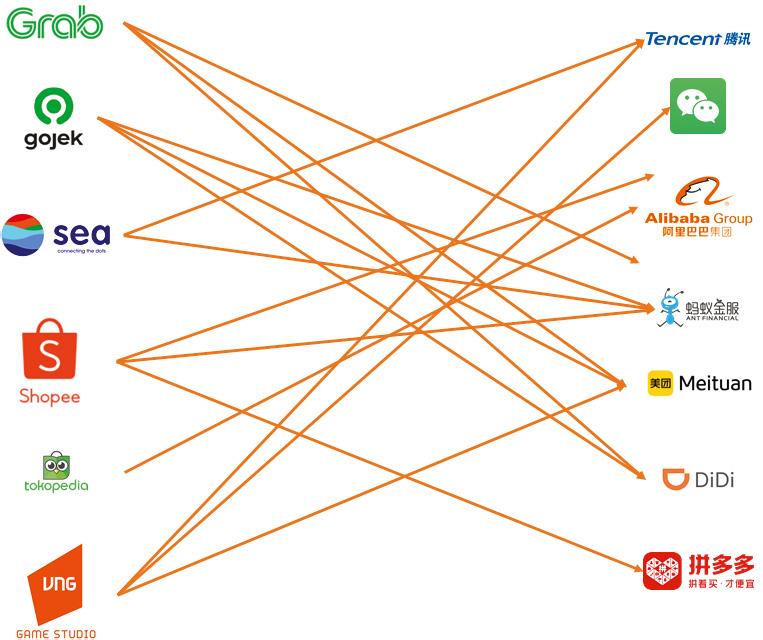
markets and Chinese
Source: Momentum Works.
This leads to what we call the “super app” strategy,1 as demonstrated by WeChat, Meituan, and Alipay: consumers can shop, order food delivery, make payments, and access municipal and other services, all on the same app. The strategy helps the firms deepen their moat and fend off potential competitors. It also helps the companies extract more value from their customers—this is especially the case in China where the average customer value is still considerably lower compared to their US peers.
Certain US companies are also taking the same approach, albeit with less urgency; companies in emerging markets tend to copy the Chinese model more, as the market realities they face resemble those of China more (Figure I.1).
The definition of internet companies given at the start of this section helps us generate a table of Chinese versus US internet firms in different domains of businesses (Table I.1). The purpose is not to show a comprehensive list, but to give an idea of what types of firms we focus on in this book.
TABLE I.1
Chinese Internet Firms versus US Internet Firms
China
United States
1 Shopping— Marketplace Alibaba/Pinduoduo Amazon/eBay
2 Shopping—Retail JD
Walmart/Amazon
3 Shopping— Nonplatform Youzan, Weimob Shopify (Canadian), BigCommerce
4 Shopping/Vertical VIPS Etsy, Chewy, Wayfair
5 Social/Messaging Tencent Facebook
6 Search engine Baidu Google
7 Ride hailing Didi, Meituan Uber/Lyft
8 Food delivery Meituan, Alibaba Doordash, Uber
9 Short video Tencent/Kuaishou/Douyin (Bytedance)
None—TikTok dominates
10 Online travel Ctrip.com, Meituan, Alibaba Booking.com, Expedia, TripAdvisor
11 Music streaming Tencent, NetEase Spotify (Swedish), Apple
12 Digital payment/wallet Ant Group, Tencent Square/Paypal/Venmo
13 Smartphones Xiaomi/Huawei/Oppo/Vivo/ Oneplus/Realme/Transsion Apple
14 Video streaming Iqiyi/Tencent Netflix/Amazon/Disney+
15 Property Beike Zillow/Opendoor
16 Used car Guazi Carvana
17 Intercity logistics Lalamove
POP- LEADERSHIP
None (Lalamove expanding)
Searching for a global market is not unique to Chinese firms. In their overseas journey, Chinese firms face some of the same or similar challenges that US, European, Japanese, and Korean companies faced in the past. However, the key differences faced by the current wave of Chinese internet companies include, but are not limited to, the following:
■ The pace is much faster, compared to traditional industry such as Unilever investing decades in cultivating the Chinese market, or Toyota investing in Indonesia.
■ Chinese firms have a large domestic market (compared to Japanese, Korean, or even European markets), which is a double-edged sword for their globalizing efforts.
■ Chinese internet firms have developed unique capabilities that specifically fit the Chinese market but may not fit other markets.
■ Chinese firms do not have a natural advantage like US tech giants when they expand globally.
These unique features of Chinese internet firms in their overseas ventures can challenge our thinking on the global strategy and implementation. Keeping in mind the commonalities and differences of Chinese internet firms and other companies, we are using the POP-Leadership framework to describe and help you understand the key aspects of Chinese companies’ overseas ventures (Figure I.2).
Leadership
Leadership is in the central place, because leaders make decisions on behalf of their firms, and their actions (and inactions) will be amplified through the organizational system. Leaders set the ambition and direction for their firms, make ultimate decisions to advance or retreat, allocate, or cut resources in different markets. We have seen firms become legendary because of their leaders’
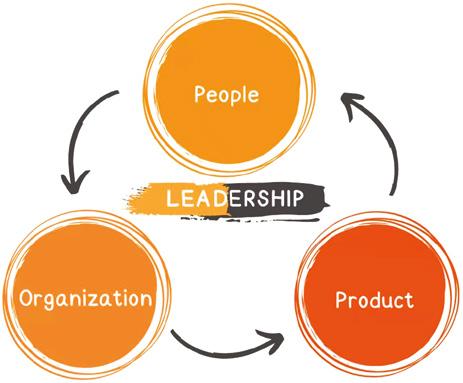
inspiring vision and determination. We also witnessed many other firms collapse because of their leaders’ overconfidence, vacillation, and misjudgment at critical stages.
To understand a firm’s strategy, we first need to study its strategist. Indeed, leaders provide a shortcut for us to comprehend or even foresee the next strategic move, as decades of research have tried to understand how top executives’ experiences, cognition, emotions, and psychological attributes influence organizational choices and strategic outcomes.2
Leaders of Chinese tech firms grow up in their unique environment, and thus have different imprinting effects on the organizations they create. Despite its relatively short history, the Chinese internet industry has experienced different generations of tech leaders, from early pioneers such as William Ding (founder of NetEase.com) and Charles Zhang (founder of Sohu.com) to recent iconic figures such as Yiming Zhang and Colin Huang. The newer generation of tech leaders has a more international mindset from the beginning.
However, overseas expansion for tech firms that have established a presence in China is a second entrepreneurial journey during which their leaders are going to face new challenges in a different environment unfamiliar to them. Meanwhile, these leaders have to deal with domestic Chinese businesses that are hypercompetitive, too.
Thus, in addition to being thoughtful strategists, relentless executioners, and resilient survivors, which makes them who they are today, what more is needed for the global expansion of tomorrow? We draw from prior experience of Chinese tech firms to unveil the leadership considerations in overseas venturing. For instance, how does these leaders’ mental space switch between two markets (domestic versus international)? What resources and managerial attention will need to be invested or allocated in new territories? How do leaders navigate their firms through these complex situations?
People
People is the second element we discuss in the framework. Undoubtedly, people who make things happen are the core of the organization, not only in executing strategy, but also in formulating strategy and in adaptation (i.e., in the bottomup process of responding to market feedback).
Chinese internet firms have a unique trajectory in the people they can hire, from a very humble beginning where no one really wants to join (think about the earlier days of Alibaba and Tencent) to the most attractive places where all the young talent wishes to be enlisted. Chinese tech firms have recently started aggressive global hiring of senior executives.
Experienced seniors are those who matter the most, but are also the hardest to manage in the organization. There are different issues for those veterans internally promoted through the ranks and those hired externally, especially in overseas markets. How do you get strong lieutenants to operate and tackle the challenges of global expansion? What can you learn from the people and HR systems that currently function well in China? More importantly, how do you fill the gap of people issues and crack the code in overseas expansion?
Organization
Organization is the third element in our framework. It addresses the issue of how to group people together to achieve a common goal. Doing this is never an easy task, especially when these people are strangers, and the goals need to be figured out along the way in a fast-paced tech environment. The challenge is further amplified when firms grow bigger, absorbing more people whose experiences, life goals, and ways to approach work are not necessarily fully aligned with each other.
Chinese internet firms and their leaders have designed their own systems to address the organizational issues in their journey to become the unicorns and then the tech giants. In other words, it is a selection process of survivors: firms that cannot address the organization issue have disappeared or become irrelevant in today’s business landscape.
To keep organizational dynamism and agility, Chinese tech firms have developed several tactics, such as continuous organizational restructuring, the rotation of executives, and intense internal competition. However, what make these firms dynamic and agile to adapt to the changing environment in China will also create problems in their overseas businesses.
We discuss how the fundamental issues in the organization—decision rights, information communication, and resource allocations—arise if firms simply copy and paste the structure that works well in China to overseas markets. Again, drawing from the experience of many Chinese tech firms, we suggest several questions related to organization for leaders to consider in their overseas venturing.
Product
Product is the last, but not the least, element in our framework. The implications of leadership, people, and organization have to be translated into products (both tangible offerings or intangible services) to engage with clients, to generate and capture value.
In overseas expansion, product is related to a series of decisions that include three Ws and one H: what to offer, when to enter, where to enter, and how to enter foreign markets.
The Chinese internet is a relatively closed ecosystem and Chinese users have different behaviors that have also been evolving over the past decades because of high economic growth and new technology adoption. Such an environment breeds different products, such as supper apps.
Thus, in their overseas venturing, leaders need to decide what to adapt to the local market (i.e., the trade-off between localization and standardization in global businesses). We also discuss various perspectives of key questions of where, when, and how to enter. Proposing a one-size-fits-all solution is difficult; instead, we lay out key considerations in product-related decisions in overseas venturing.
To summarize, POP-Leadership covers leadership, people, organization, and product, which synthesizes key themes of successful overseas ventures, as well as the key challenges along the way. The framework facilitates strategists to dissect the ambitious goal into manageable pieces, guiding them to think systematically to identify the potential pitfalls and the key bottlenecks when they consider their own global expansion.
BOOK STRUCTURE
In Part One, which includes three chapters, we first introduce who these Chinese tech firms are and how they copy and innovate, compete, and grow. This information will provide you with a better understanding of these emergent players in the global arena.
In Part Two, which includes four chapters, we get into the details of each parameter of the POP-leadership framework, with Chapter 4 focusing on leadership, Chapter 5 on people, Chapter 6 on organization, and Chapter 7 on product. Although we illustrate the parameters one by one, all of them are essentially interconnected.
In Part Three, we reflect on the latest happenings in the China-US geopolitical tussle, the regulatory crackdowns in China in 2021, and the rise of Chinese-inspired companies globally, particularly in Southeast Asia. We also take the perspectives of the local players to understand the potential spillover effect triggered by Chinese tech firms’ overseas investments.
Finally, we present Chinese tech firms’ global map and a picture of crosspollination of global emerging markets. We believe it is still in the early stage, and expect a few full blossoms in the future, despite the enormous challenges ahead.
NOTES
1. G. Chen and M. Trocha, “Super Apps: How to Create a Mass Market of One,” INSEAD Knowledge, October 2, 2019.
2. S. Finkelstein, D. Hambrick, and A. Cannella, Strategic Leadership: Theory and Research on Executives, Top Management Teams, and Boards (New York: Oxford University Press, 2009).
